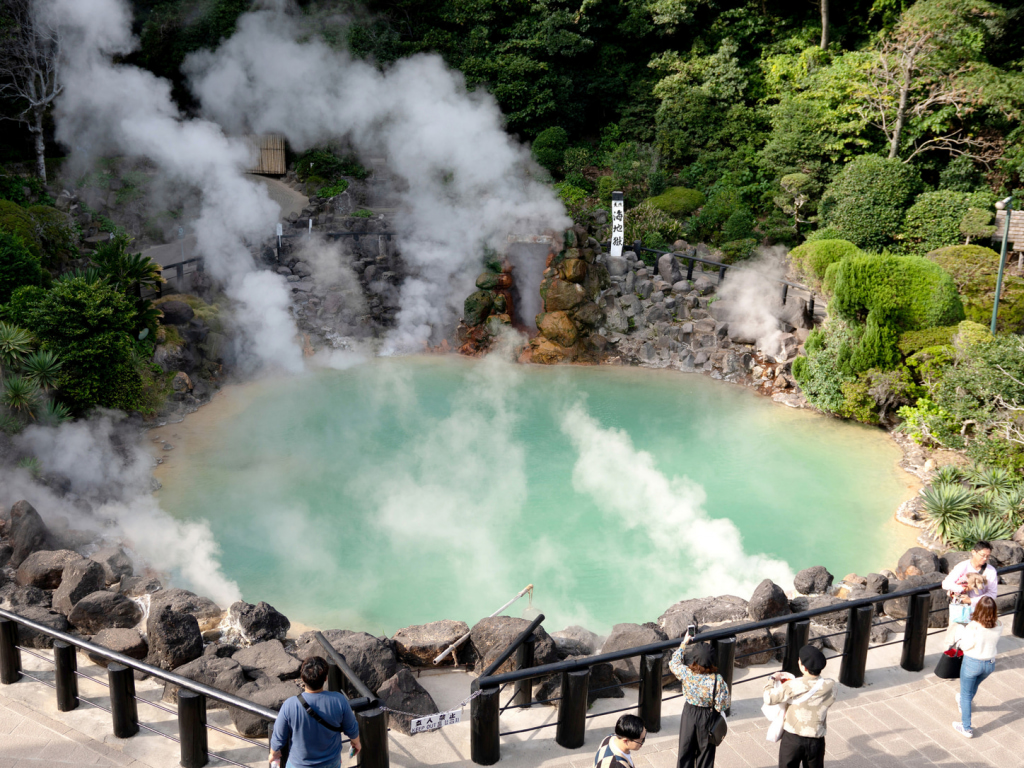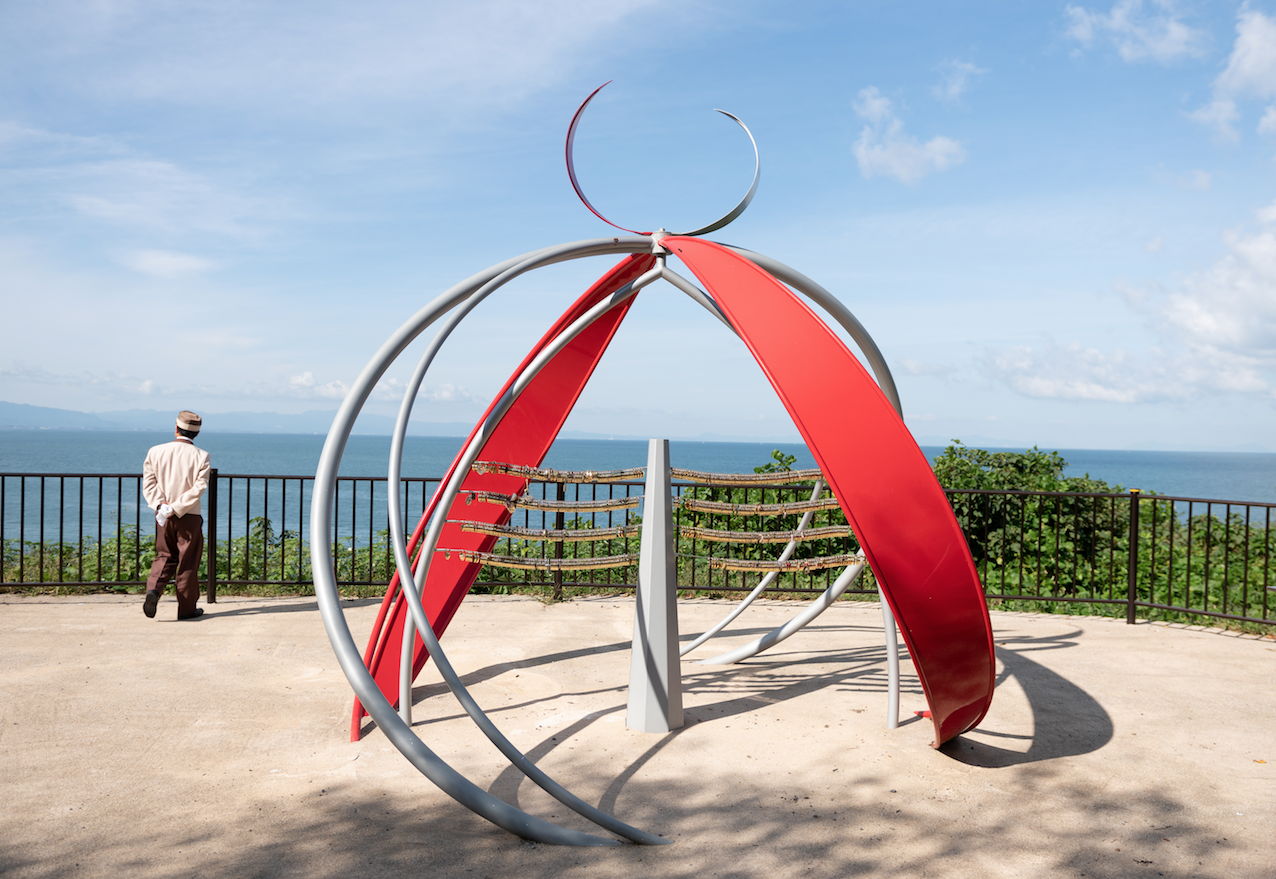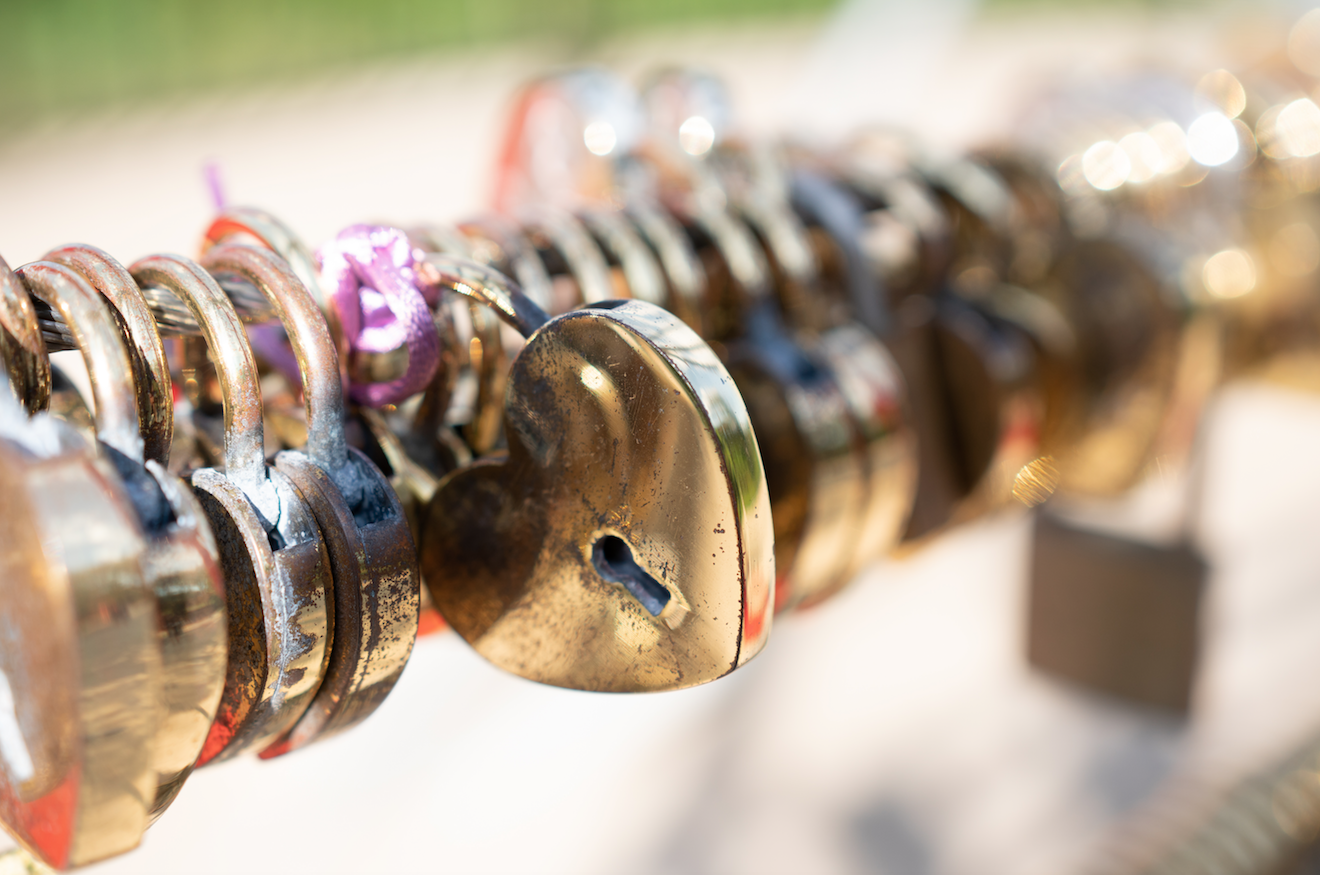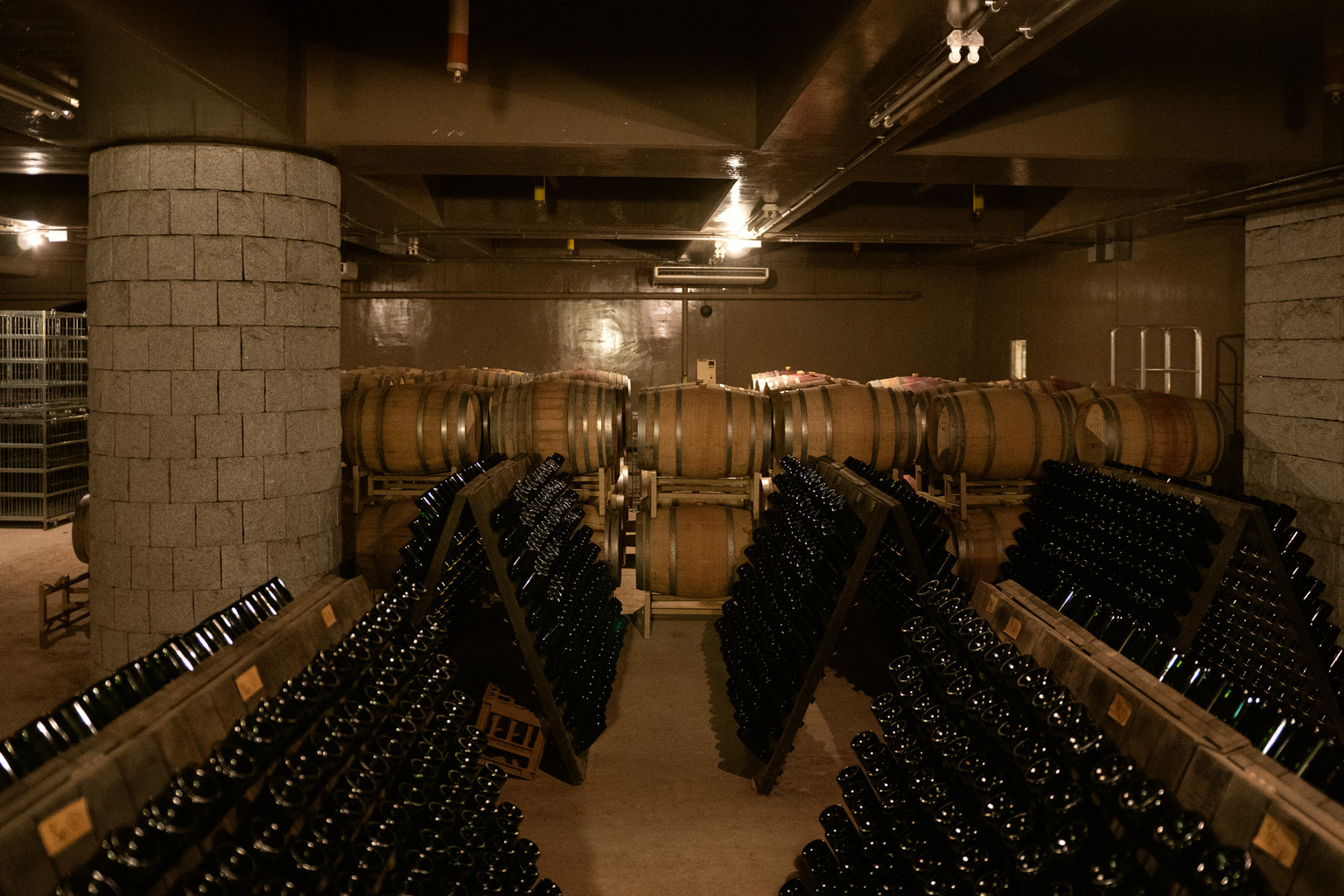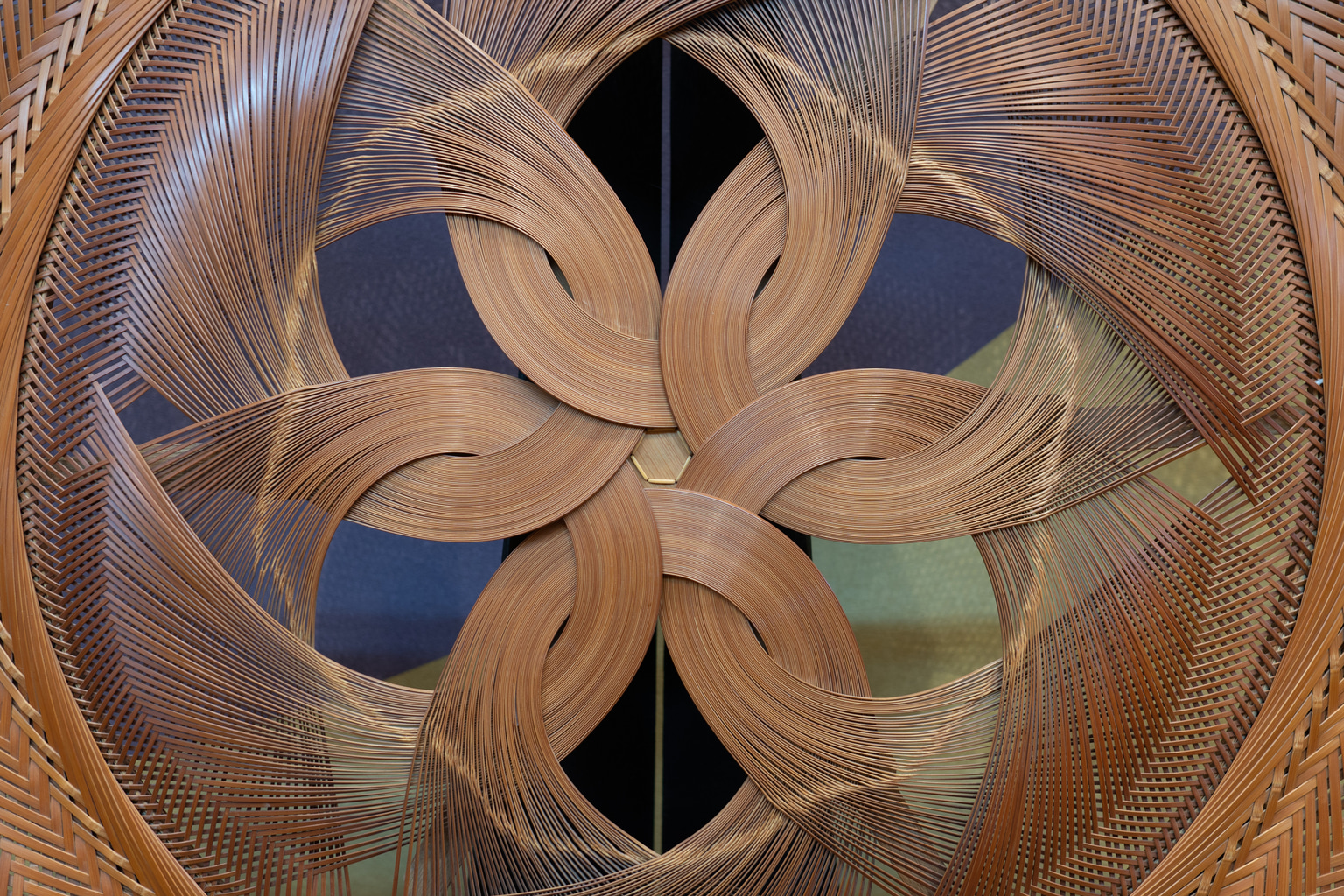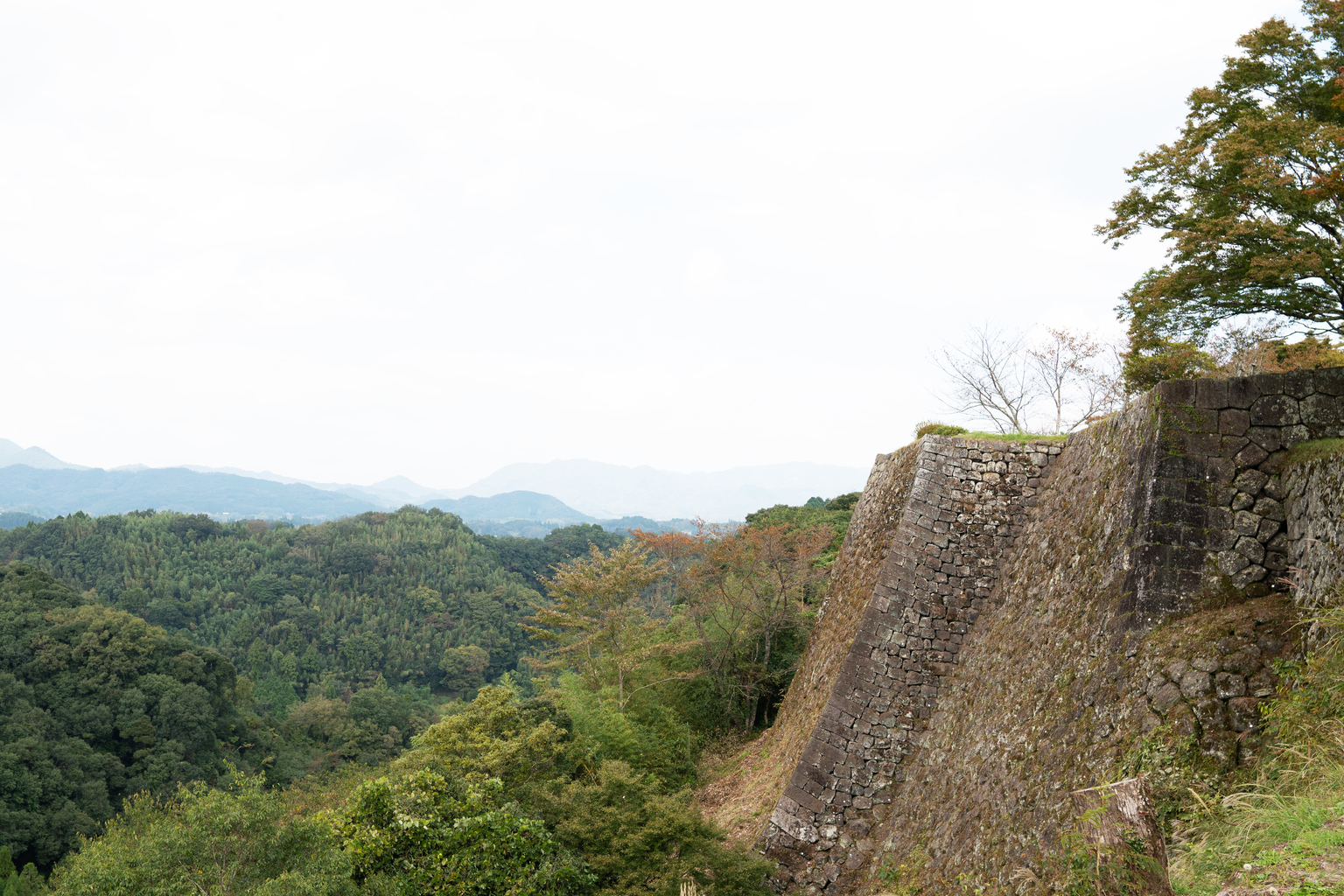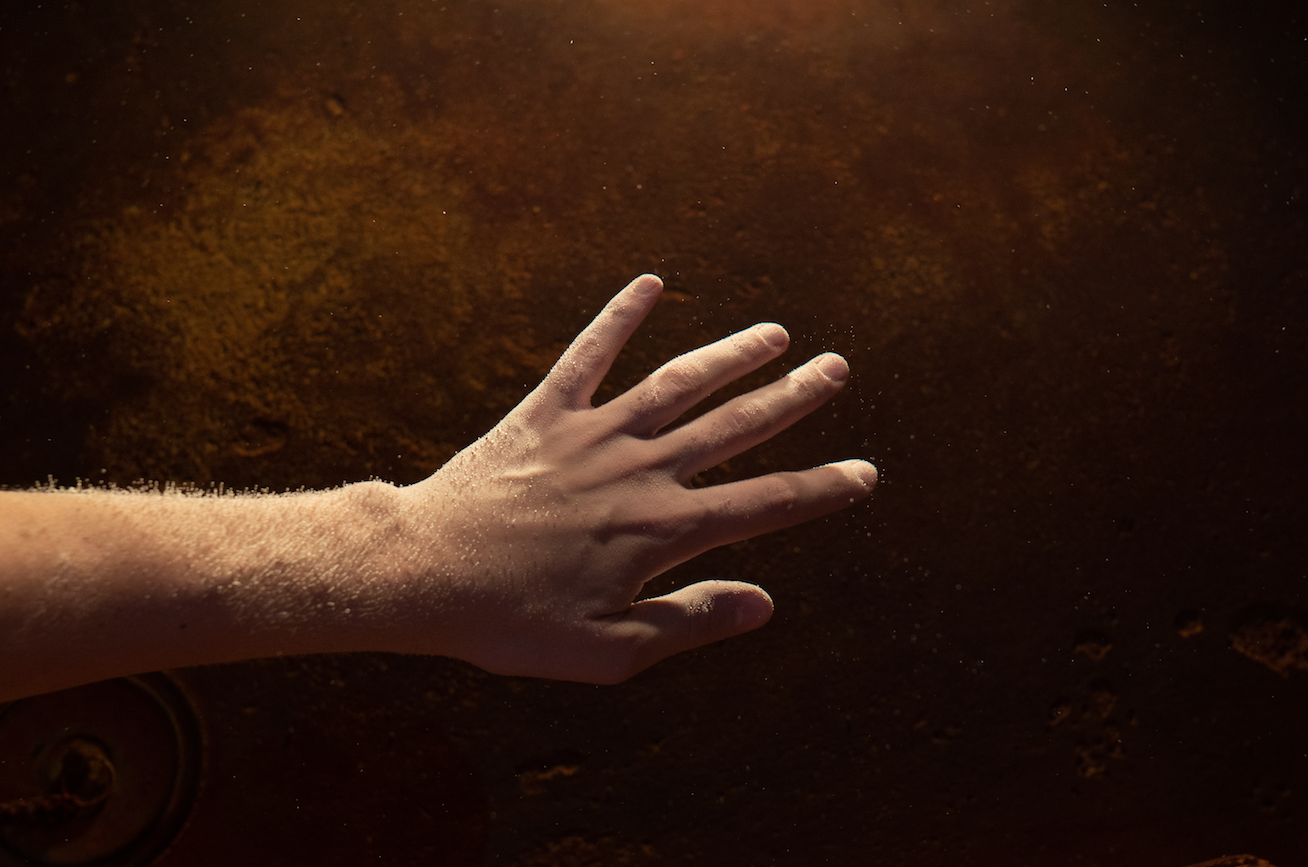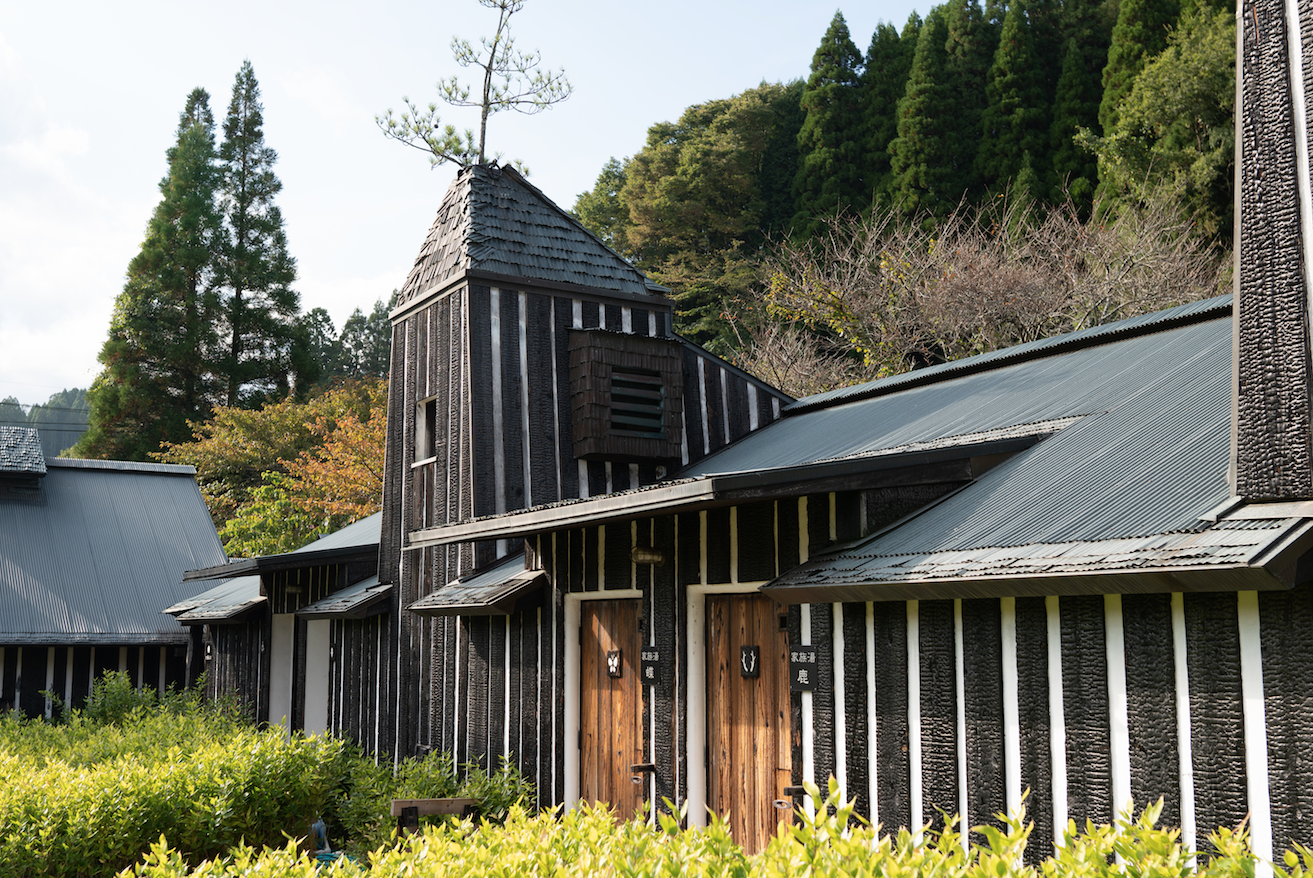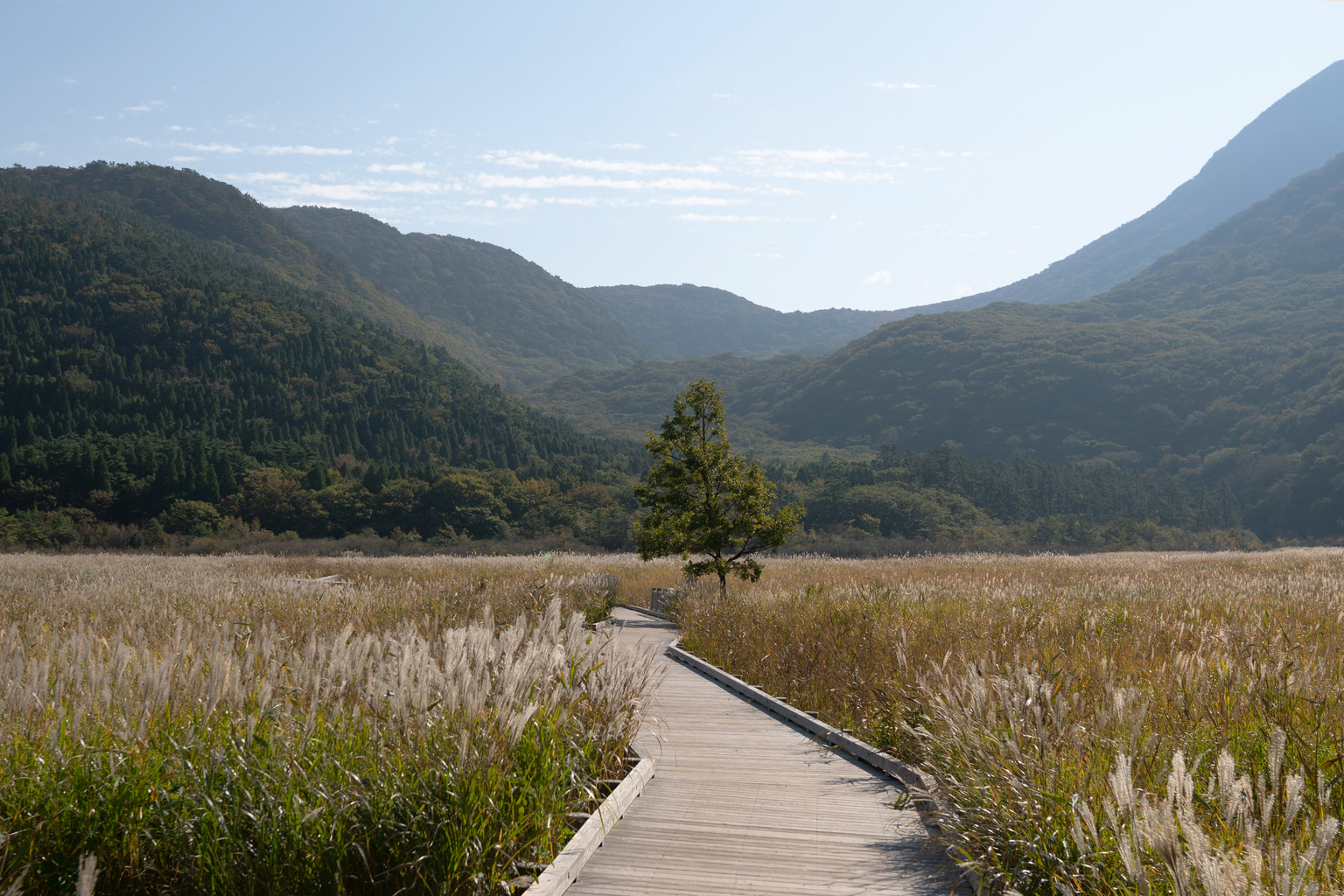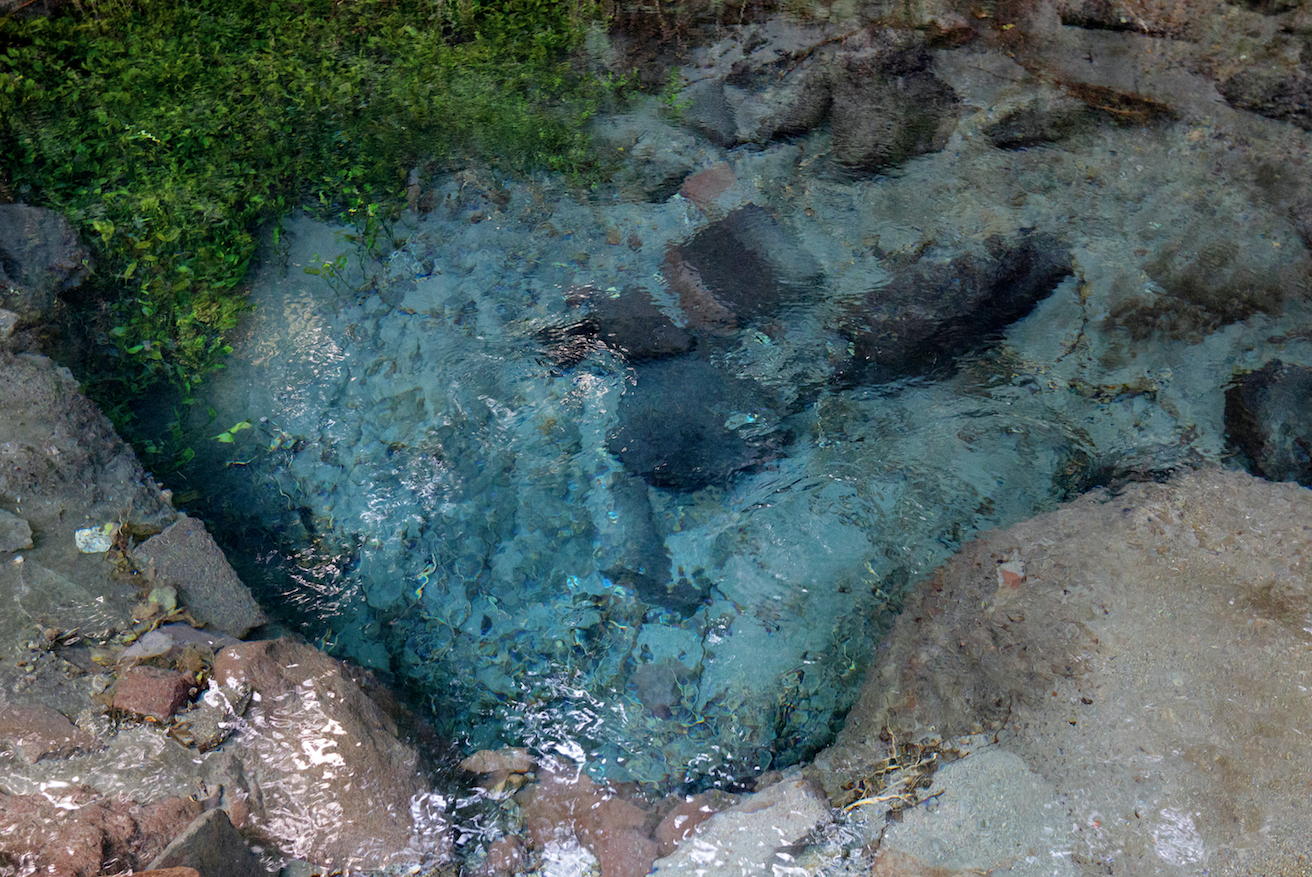There’s a chance you haven’t heard of Oita, but the region has captivated Japanese people for hundreds of years. In fact, the prefecture’s name reportedly stems from the legendary Emperor Keiko visiting the region and being so taken by its natural beauty that he named it Okita-kuni (the Land of Great/Many Fields). Centuries later, long after “Okita” became “Oita,” the land remains the fascinating place it’s always been. We spent four days exploring the area to bring you a curated itinerary for the perfect Oita getaway.
DAY ONE
The Lovers’ Shrine: Awashimasha
Our day began with a visit to Awashimasha. Built in 1625, the picturesque shrine by the sea is today dedicated to marriage and love, which is why the surrounding Awashima Park features a monument where couples attach padlocks with their names written on them, much like at Paris’ Pont des Arts.
Wine and Dine: Ajimu Winery
After an hour’s drive, we arrived at our next destination: the Ajimu Winery, which grows its own grapes to produce authentically Japanese wines and brandies. Besides merlot and chardonnay, the Ajimu Winery also harvests shokoshi, a Japanese grape variety that yields a deliciously spicy, rich wine. We ended our visit with lunch at the nearby Asagiri no Sho restaurant offering a variety of local Kyushu dishes, including toriten (tempura fried chicken), dojo (pond loaches), and suppon (softshell turtle).
Hyotan Hot Springs
Hyotan is the only onsen in Japan with three Michelin stars thanks to its indoor and outdoor baths, waterfall hot springs, private family baths that are refilled after each use, and sand baths where guests can bury themselves in warm sand. Equally impressive is the fact that even the showers use water from an underground hot spring (which you can actually drink at the rest area – it tastes a little salty).
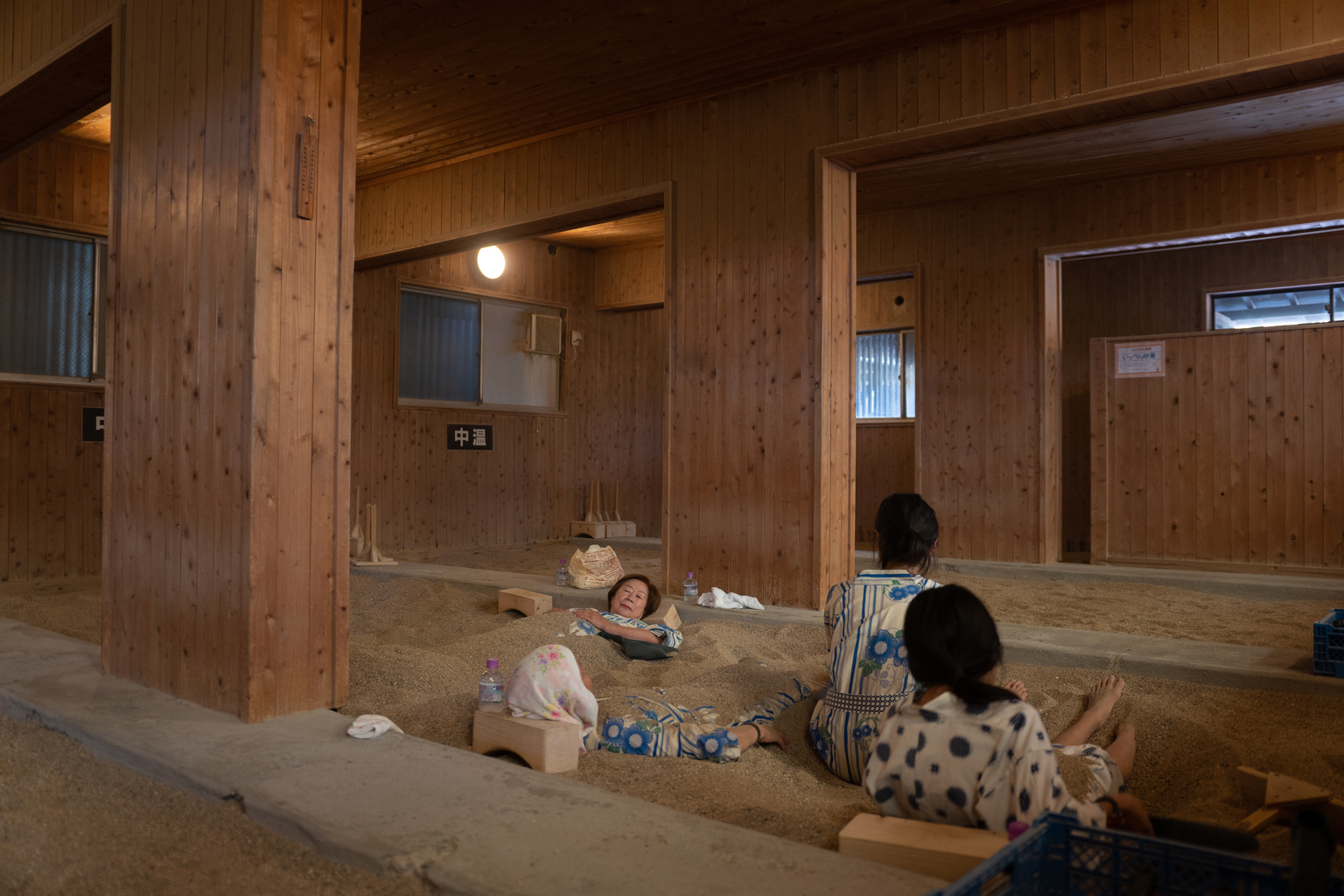
Sand Baths at Hyotan Hot Springs
Hell of a Good Time in Beppu
Beppu is the most famous hot spring resort in Japan with hot water vapors constantly steaming out of utility grates and hovering above the town. Another thing that Beppu is known for is its jigoku (hells): seven gorgeous hot springs meant for viewing rather than bathing. We had time to visit three of them: the Umi Jigoku (sea hell), a beautiful, steamy pond of blue water, Chi no Ike Jigoku (blood lake hell), famous for its red color, and the muddy, otherworldly Oniishi Bozu Jigoku (devil-stone monk hell).
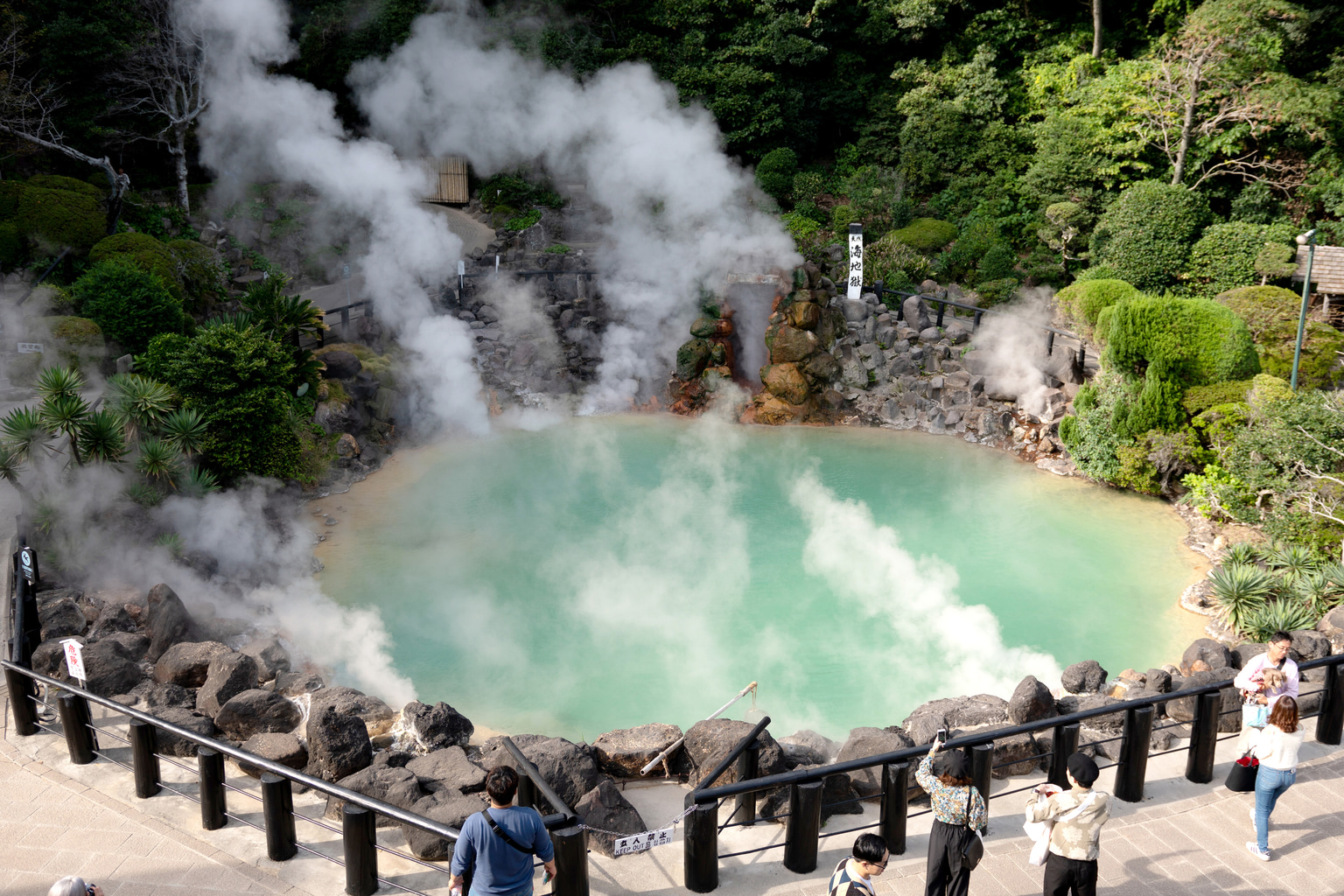
Beppu
A Steamy Evening: Yanagiya
We finished our day at Yanagiya, a Beppu inn famous for its private hot spring source. Before sampling the baths, we bought ingredients at a supermarket to make jigoku mushi (hell steaming), a local specialty where you steam vegetables, fish, or meat using Beppu’s mineral-rich vapors in concrete steam pots. It gives the food a distinctive, delicate taste that you won’t soon forget.
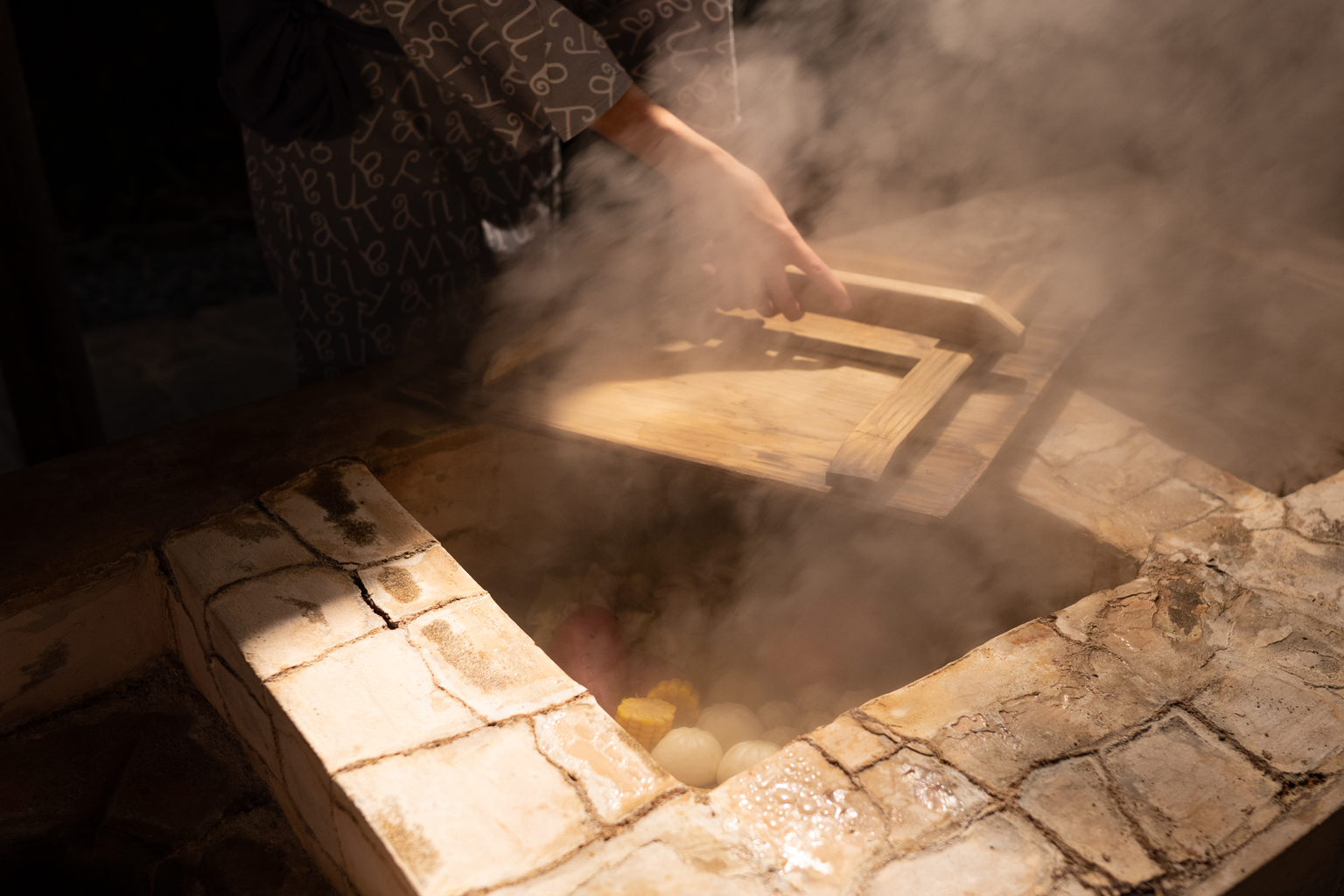
Jigoku Mushi
DAY TWO
A Lesson in Bamboo: Beppu City Traditional Bamboo Crafts Center
At the Beppu City Traditional Bamboo Crafts Center, we learned just how versatile bamboo craft can be. From gigantic art pieces to hats, toys, dishes, baskets, bags, plates, jewelry, and even fashionable handbags costing tens of thousands of yen, there seems to be nothing that bamboo cannot become.
A Fishy Lunch: Kamehachi Sushi
Having been in business for 45 years, it is no surprise that Kamehachi Sushi blew us away with their expertly prepared shrimp, anago (salt-water eel), tuna, and more. Also on the lunch menu was gomadashi udon, a wonderful local noodle dish traditionally made with eso (lizardfish) mixed with miso and soy sauce, and toriten, which turned out to be some of the best chicken we ever had.
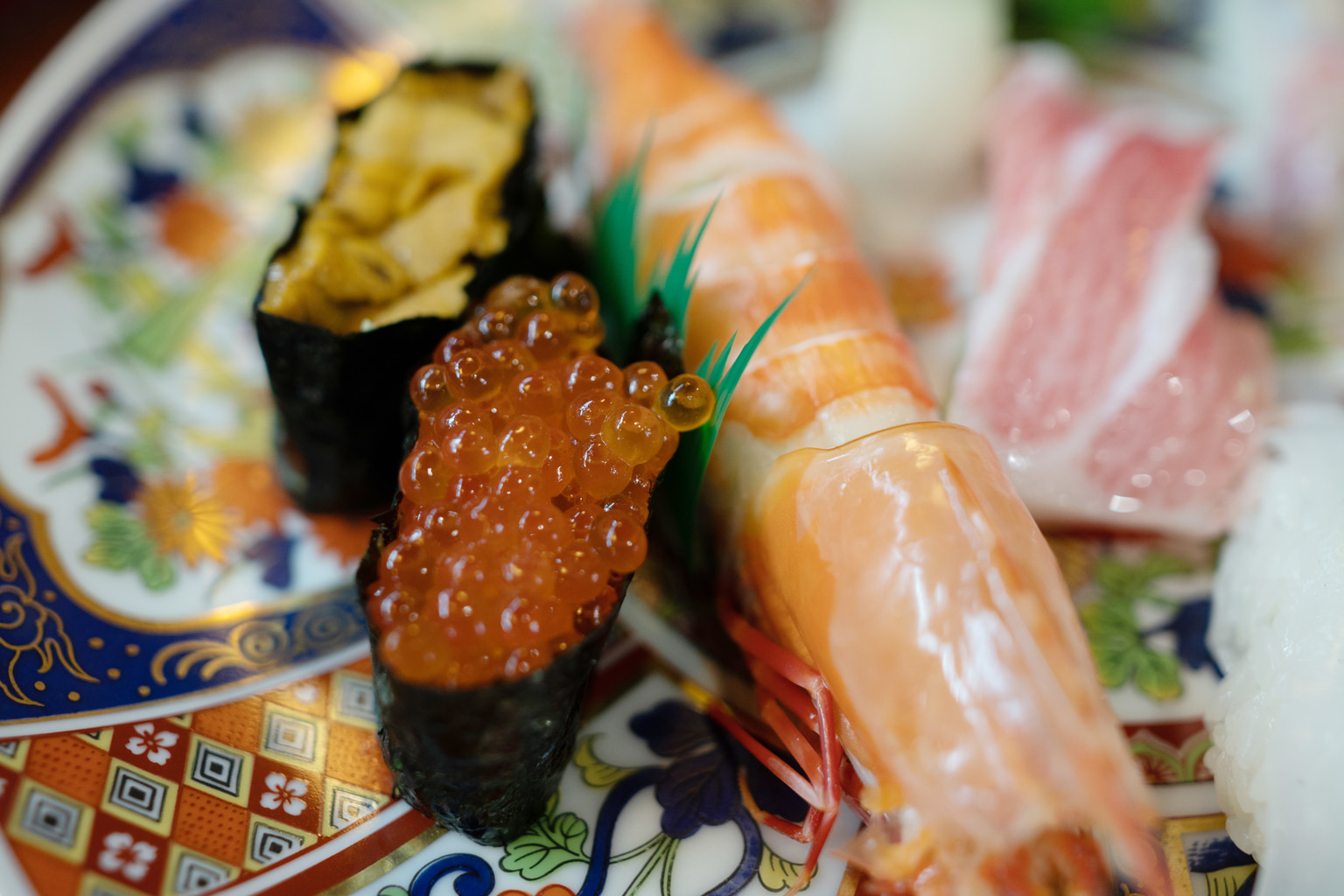
Kamehachi Sushi
The Stone-Faced Buddhas: Sekibutsu
In the castle town of Usuki we had the pleasure of viewing the city’s national treasures, the Sekibutsu: over 60 stone Buddhas carved into molten rock faces. Unlike many other Buddha monuments of this kind, the ones in Usuki are fully three-dimensional figures instead of 2D carvings. Although every Stone Buddha is undeniably magnificent, the Furuzono-Sekibutsu depicting the Supreme Buddha of the Cosmos is considered the most important statue and the face of the Usuki Sekibutsu.
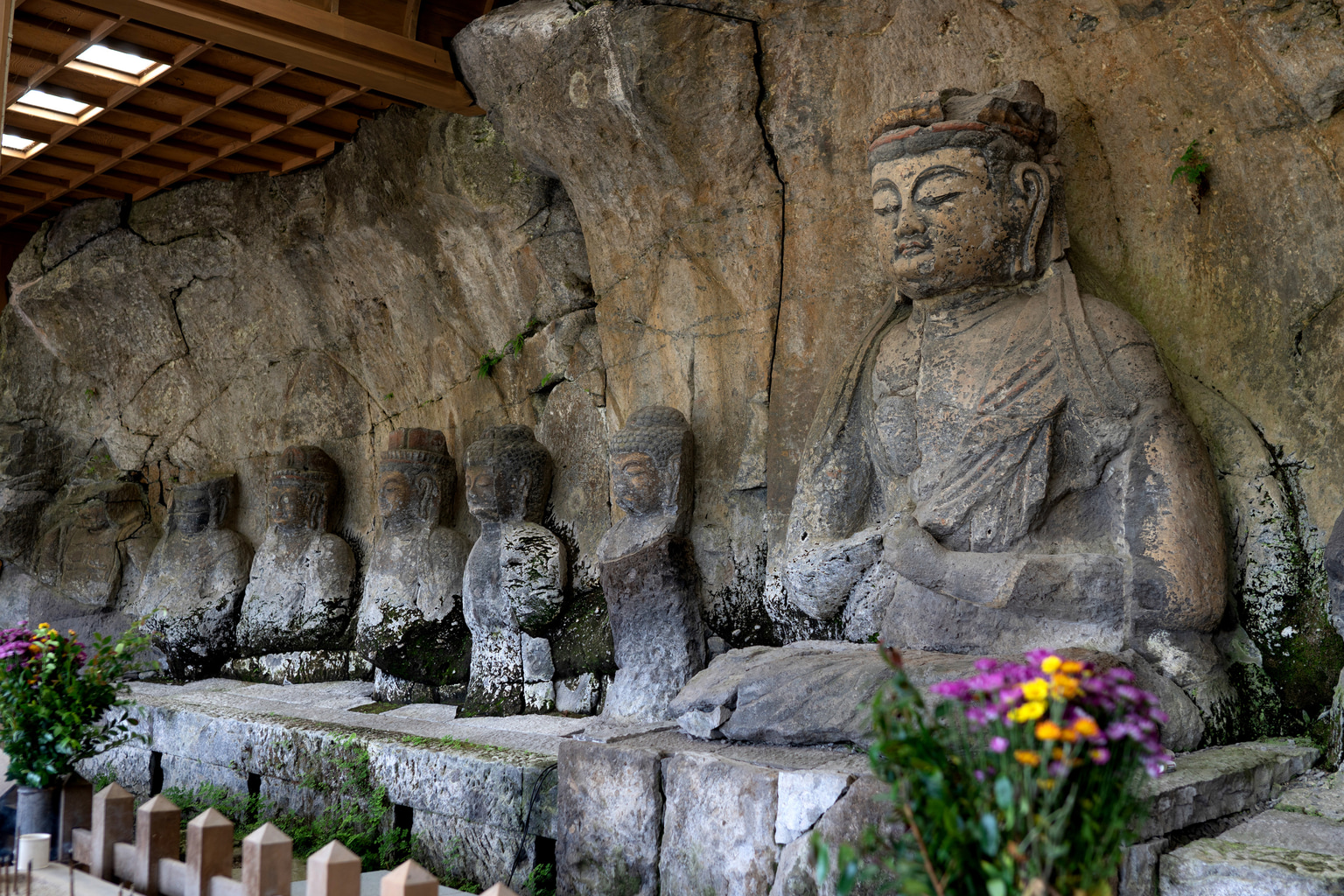
Sekibutsu
A Walk Back in Time: Nioza Rekishi no Michi
After a short drive, we arrived at Nioza Rekishi no Michi, a historic area surrounding Usuki Castle where the oldest store is over 400 years old. Nioza is a great place to purchase some snacks and souvenirs such as miso, sake, kabosu citruses, and even soy sauce-flavored ice-cream.
A Night in the Country: Yasashii Jikan
We spent our second night in Oita at the Yasashii Jikan (gentle time) farm lodgings in Sasamuta, where we experienced an authentic piece of rural Japan. We spent the rest of the day talking with our hosts and making yaseuma, a local delicacy of boiled wheat noodles sprinkled with soybean flour and sugar. It made for a delicious dessert after a hearty dinner of fish made over an irori hearth and other Oita specialties. After dinner, our host took us to see the locals training in the martial art of bojutsu (staff fighting) in preparation for festival celebrations held at Sasamuta Shrine. Highly entertaining and recommended!
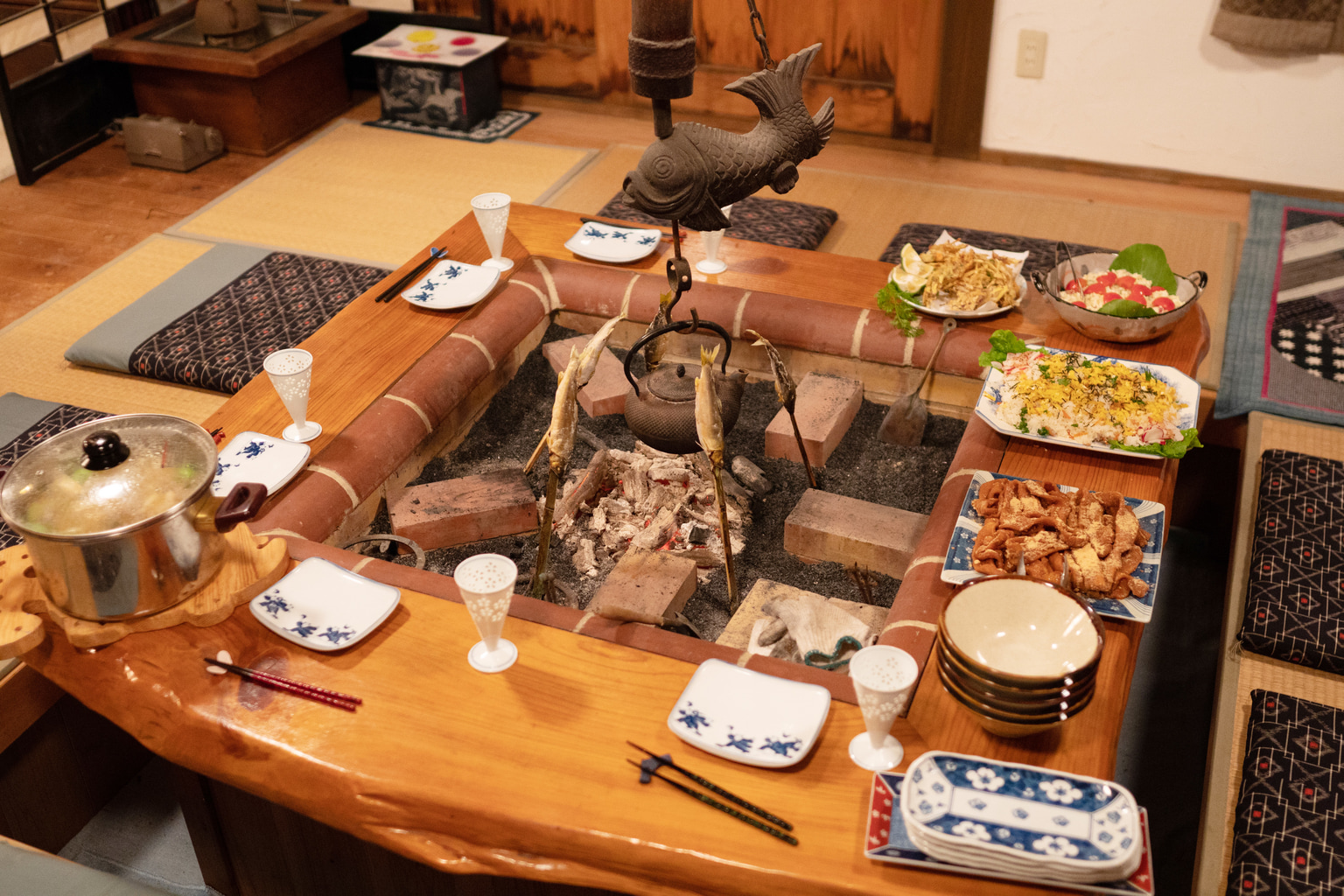
Dinner at the Yasashii Jikan
DAY THREE
Strong Start the Day: Takakiya Sake Brewery
There is a lot to be learned at the Takakiya Sake Brewery, like how Kyushu locals prefer sweet sake to dry sake. As for the brewery, we were impressed by how many tasks are still done by hand using old methods supplemented with modern technology, which allows the brewery to produce 70,000 bottles of sake a year.
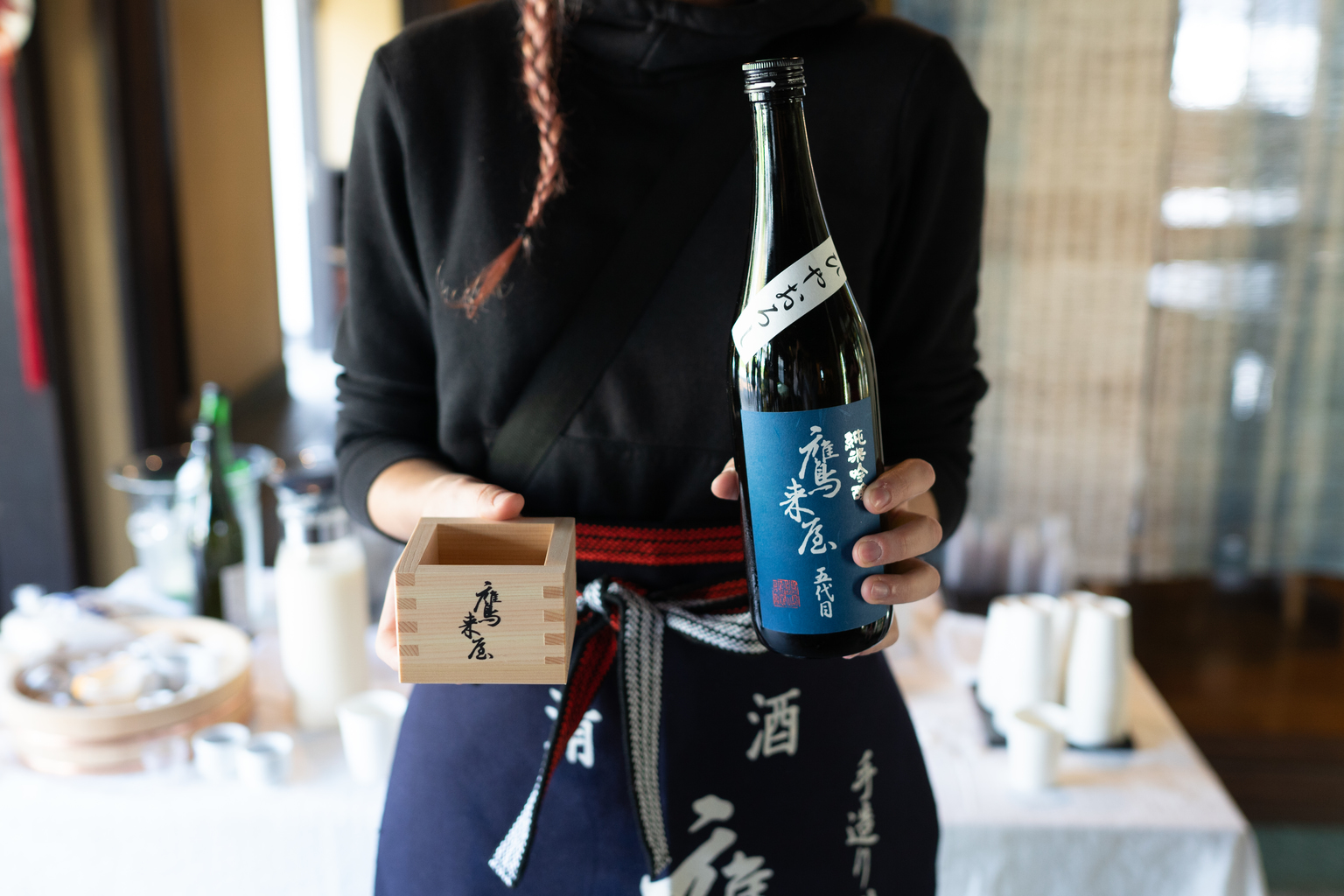
Takakiya Brewery
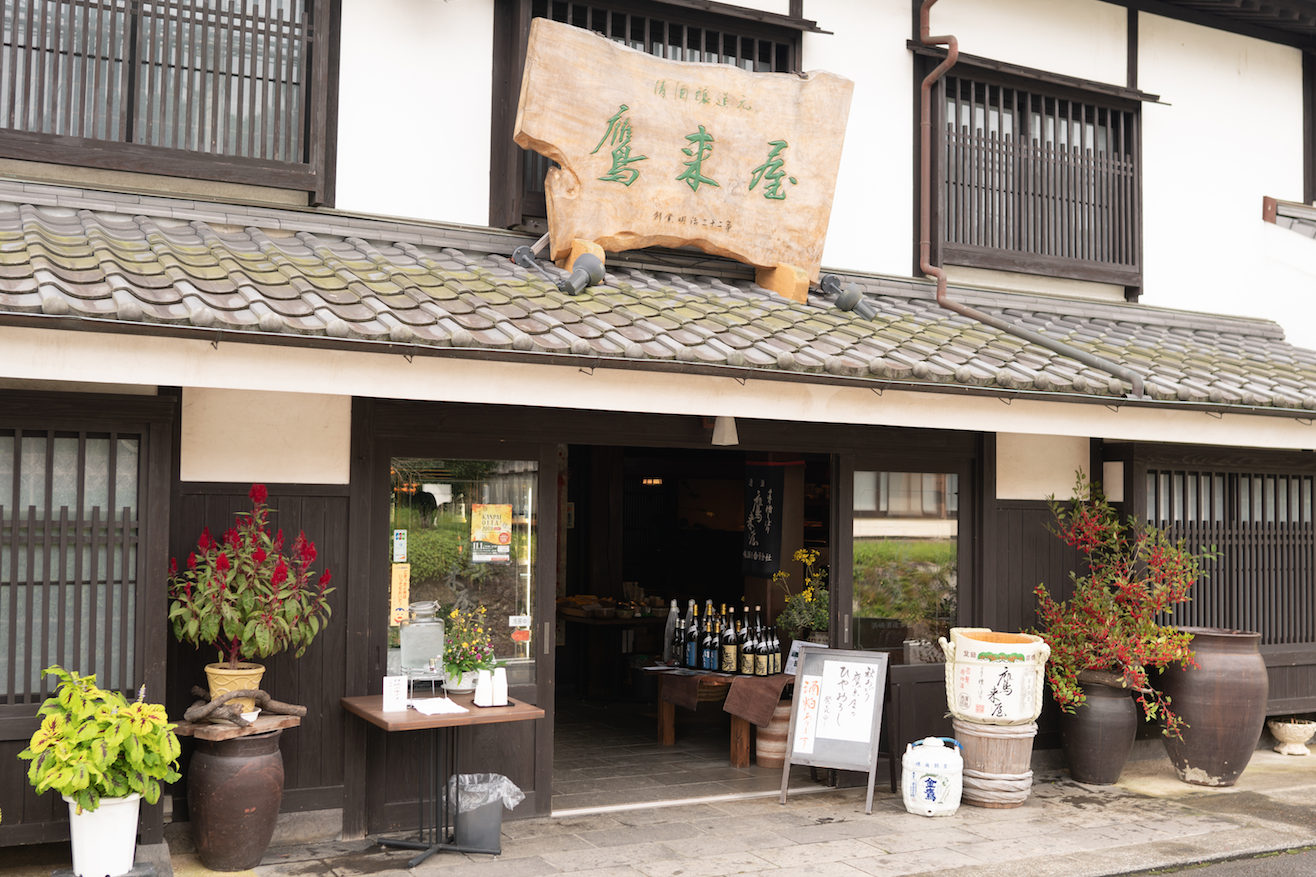
Chasing Japanese Waterfalls: Harajiri
Our next stop was the Harajiri Falls, which are 120m wide and 20m high, and often called the Oriental Niagara. Because they are located on a plain, they are easily accessible, allowing you to experience the falls’ thundering majesty up close. The best views of Harajiri are undoubtedly from the Takimibashi suspension bridge above the falls.
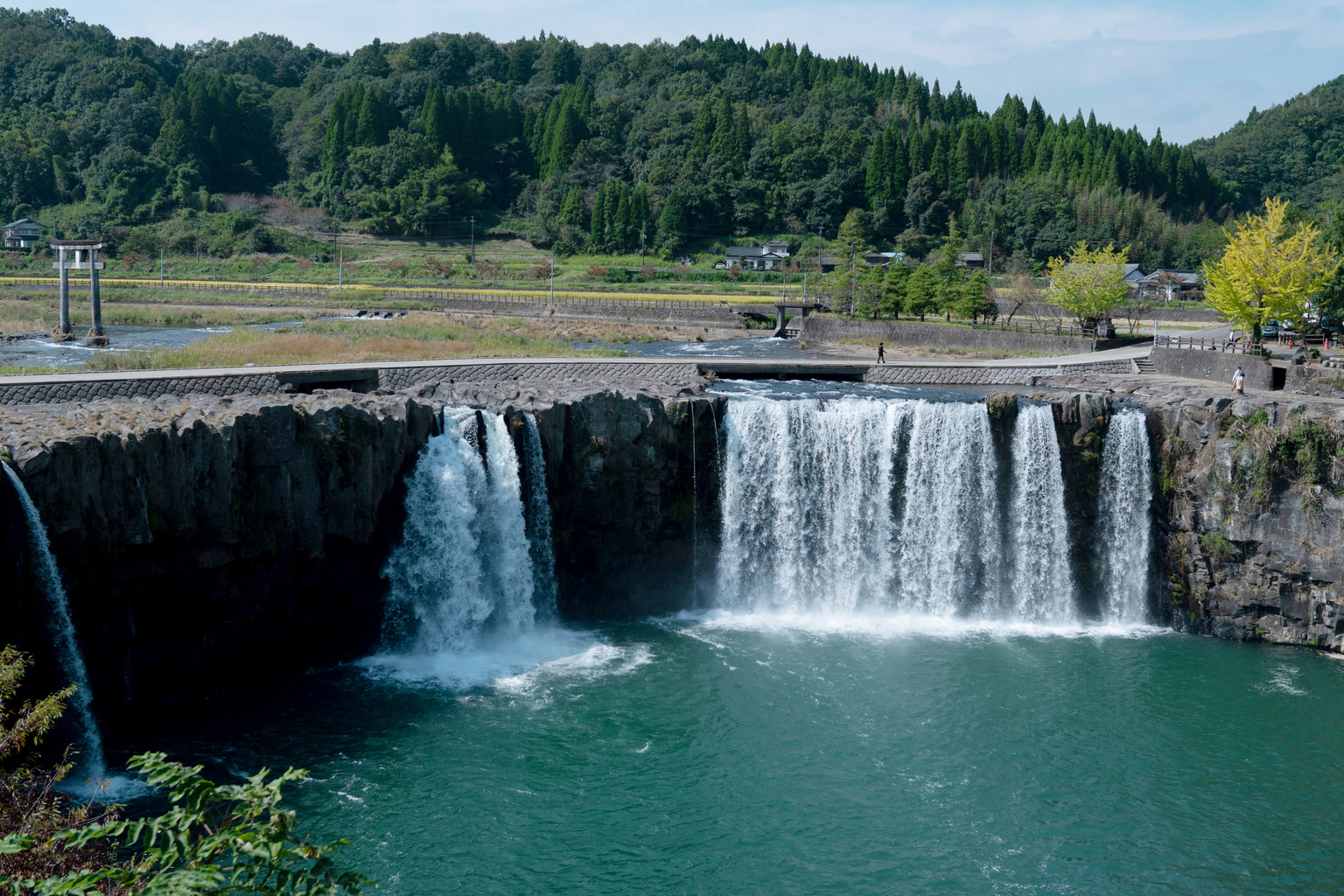
Harajiri Falls
Oka Castle Ruins in Taketa City
After a lunch of torimeshi (a local favorite consisting of rice, chicken and burdock), we were ready for the Oka Castle ruins. The castle was originally built in 1185, but today only the fortifications of this once marvelous structure remain. It’s a long stair climb to the castle walls but once you’re up there it’s all worth it thanks to the gorgeous views and history just leaping at you from the ghost of this grand, battle-hardened castle that once housed over 3,000 people.
Bubble Time: Lamune Onsen
Continuing our tour of Taketa, we headed to the Lamune Onsen hot springs, which boast bathtubs full of naturally carbonated water. It’s quite an experience to dip your body into this water and see tiny, tingling bubbles form all around you. Within walking distance of the onsen there’s also the Ganiyu hot spring, located alongside the Seri River. The size of a large-ish bathtub, Ganiyu is completely out in the open, so you’ll need a bathing suit for this one.
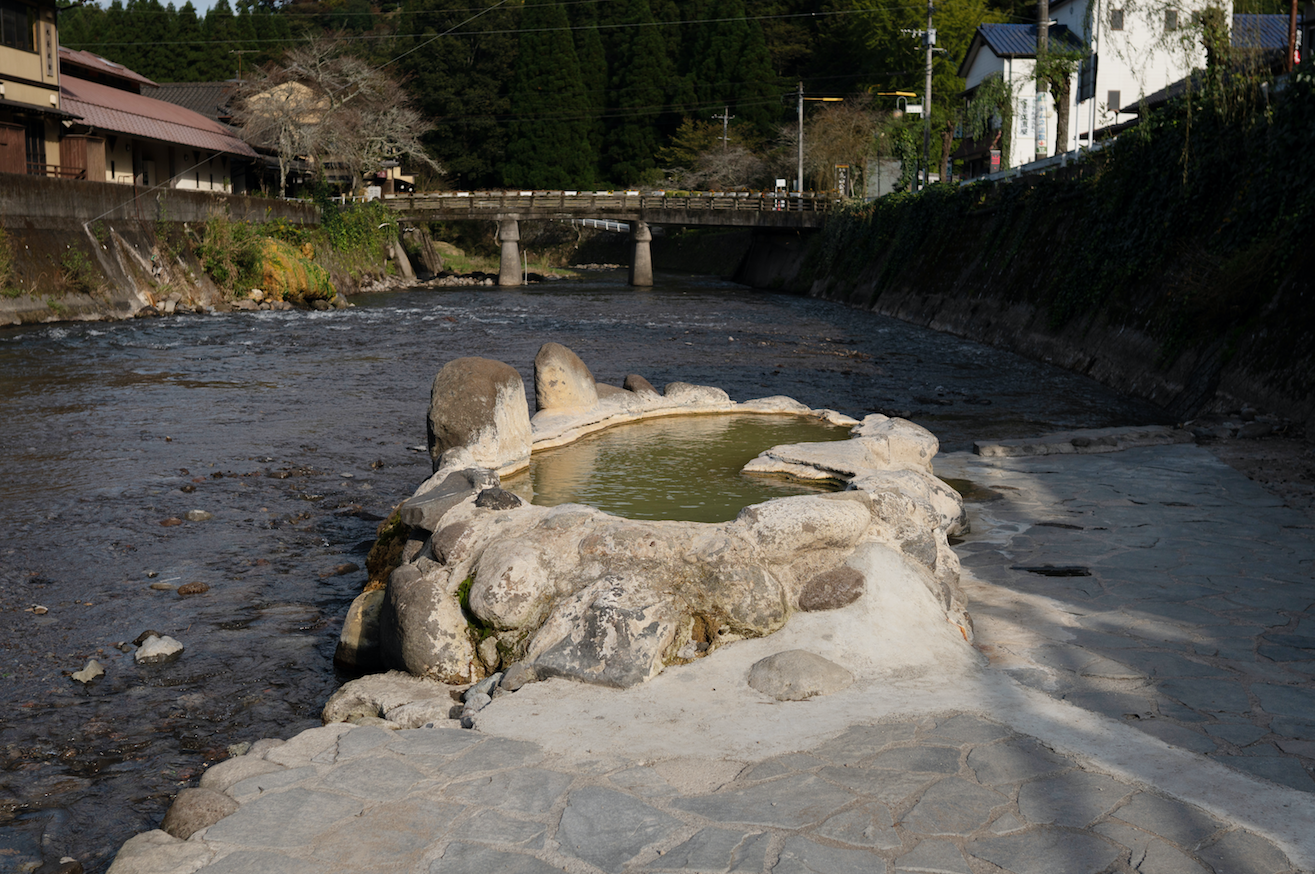
Ganiyu Hot Spring
Onsen Flowers: Kuju Kogenso
We finished up our day at Kuju Kogenso hotel where we slept soundly in Japanese-style rooms after a dip in the hotel’s onsen. The waters there are worth a mention because of their milky color and floating, natural mineral deposits called onsen no hana (hot spring flowers).
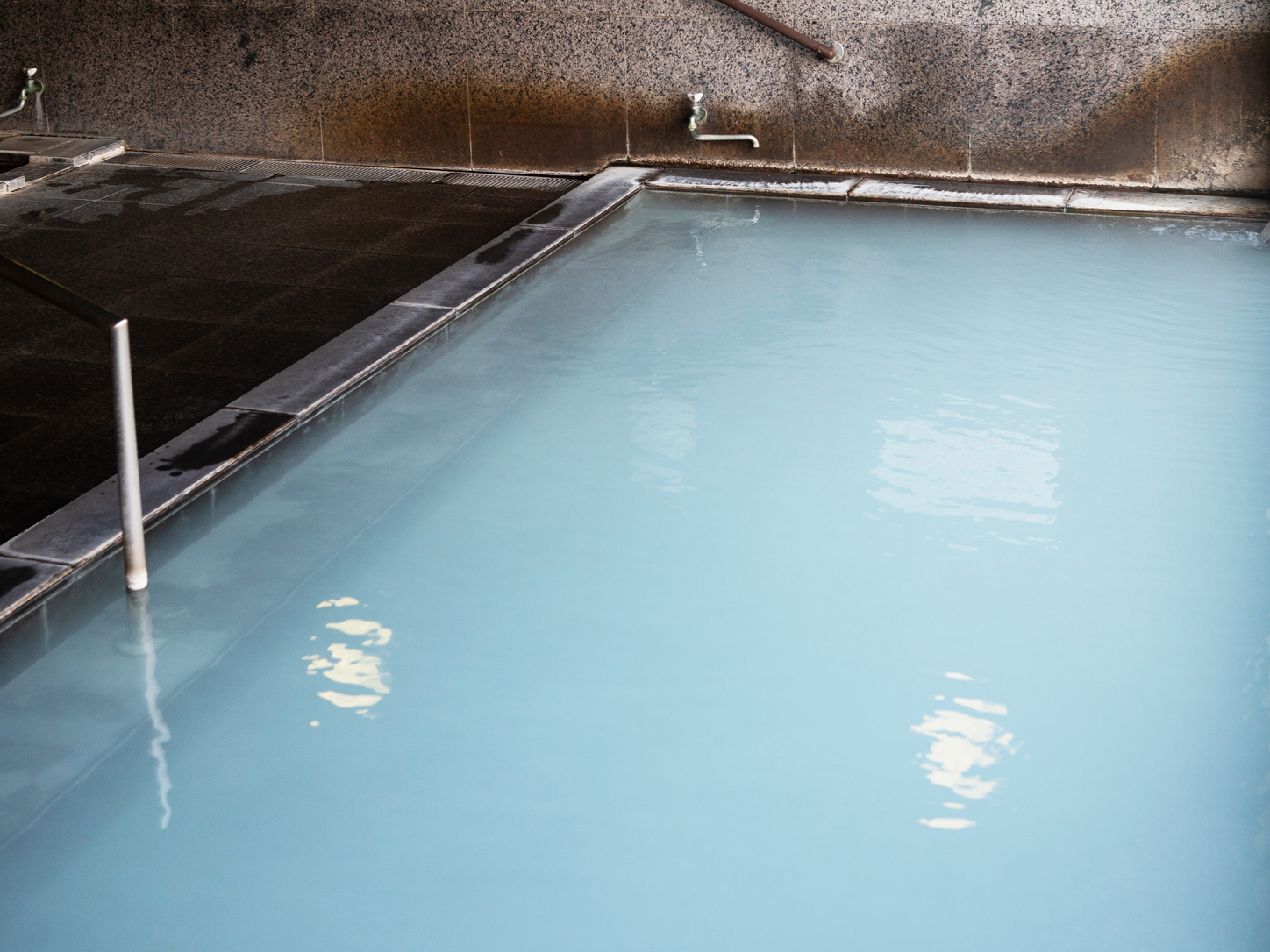
DAY FOUR
Peaceful Wetlands: Tadewara Marsh
Walking along a boardwalk through these beautiful, protected marshlands and gazing at the surrounding Kuju mountain range, we felt a deep, quiet peace that stayed with us for the rest of the day. If you’re looking for a place of calm, Tadewara Marsh will deliver.
There’s the Beef: Bebenko
For lunch we stopped at Bebenko, a farm restaurant offering Bungo beef, a high-class Oita specialty. It’s impossible to describe all the wonderful flavors of barbecued Bungo beef, but suffice to say it was one of the most memorable meals we had on this trip.
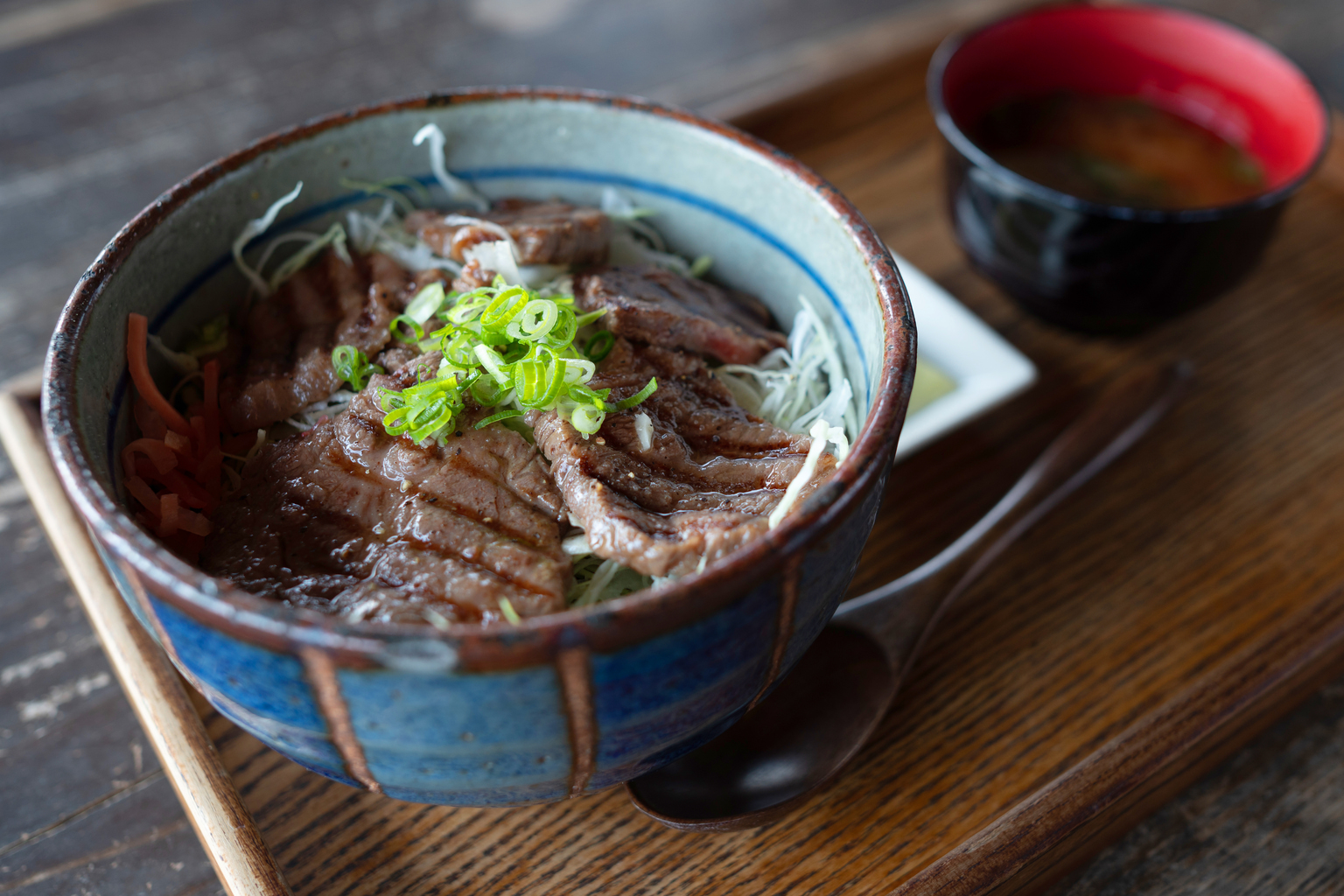
Bungo beef at Bebenko
A Sip of Oike in Yufu City
After lunch, we visited Yufu in search of the Oike spring. After a short walk through some pristine forests, we arrived at the crystal-clear water, which is famed not only for its exquisite hue but also for how fresh and clean it tastes.
The Samurai Town of Kimonos: Kitsuki Castle
Our next stop was Kitsuki Castle and its surrounding town. One of Japan’s smallest castles, Kitsuki was originally built in the late 14th century, and the modern structure you see today is a recreation housing a museum where you can take a picture of yourself wearing authentic Japanese armor. Be sure to save time to stroll around the historic streets and visit several samurai residences to see how the warrior class lived, ate, and bathed. Top tip: If you arrive in a rented kimono, you are guaranteed free entrance to some of Kitsuki’s historical attractions.
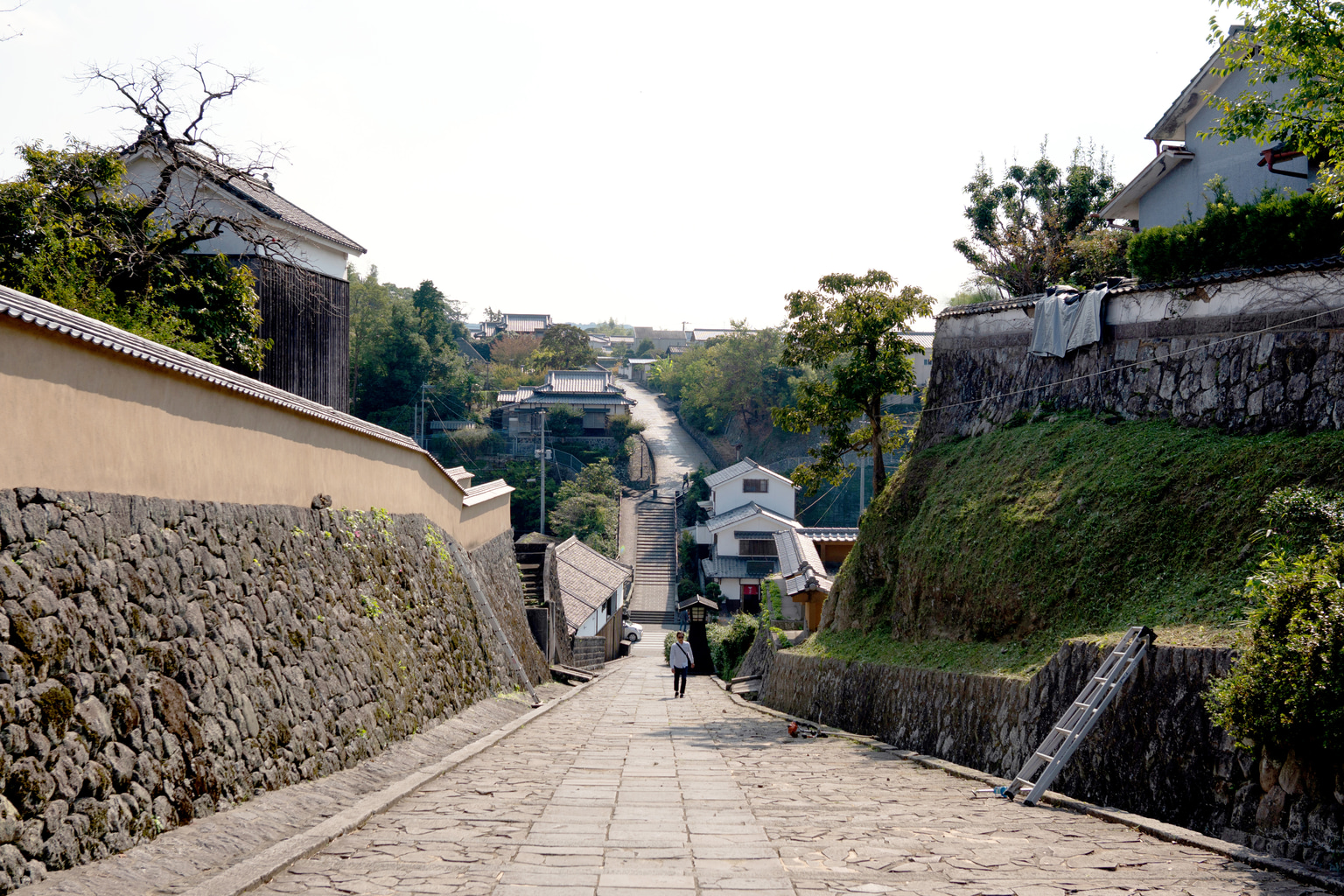
Kitsuki Castle Town
The Sun Sets Over Oita: Matama Beach
As our time in Oita came to an end, we decided to relax and enjoy the sunset at Matama Beach. In the evening, as the waters of the Matama shore recede and the sun bathes everything in its deep yellows and reds, the sea and land turn into an otherworldly landscape. It was the best possible way to end our trip to Oita, the hidden gem in the crown of Kyushu.
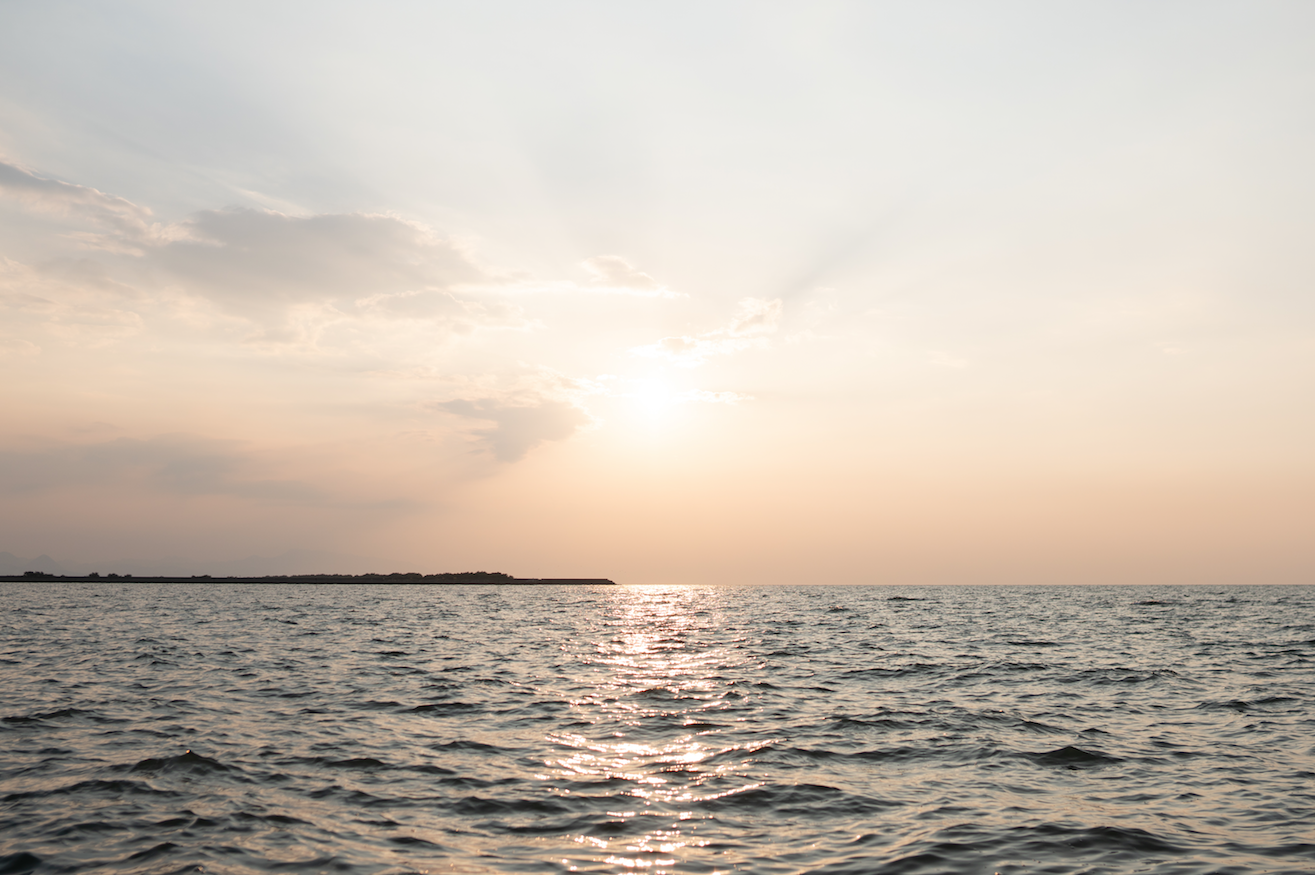
Photographs by Robert Kirsch

